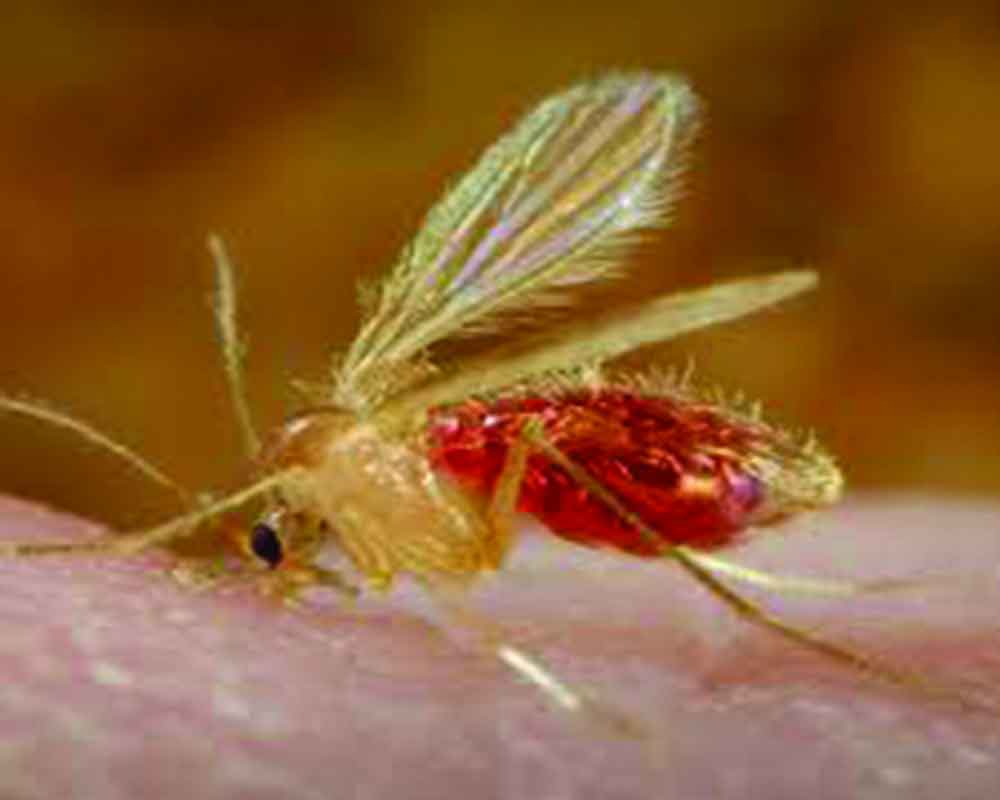There’s good news for patients with VL (visceral leishmaniasis) also known as Kala Azar co-infected with HIV, both deadly diseases, says ARCHANA JYOTI, as she tells you about the World Health Organisation (WHO) new guideline for treatment of such co-infected people usually hailing from poor strata. The new guideline reduces the duration of treatment from 38 to 14 days in India.
The previously recommended treatment for VL-HIV coinfection consisted of intermittent daily injections of liposomal amphotericin B (AmBisome) over a period of up to 38 days. The new evidence-based treatment uses a combination of AmBisome and oral miltefosine. “This has resulted in significantly better efficacy rates,” points out Dr Kavita Singh, director, Drugs
for Neglected Diseases (DNDi),
South Asia.
It is a matter of concern that people living with HIV are 100 to 2,300 times more likely to develop KA, caused by bites from infected female sandflies which attacks the immune system. These co-infected patients are marginalised and stigmatised, face poor treatment outcomes and also serve as a reservoir for KA, which is hampering sustainable elimination efforts in the country.
Kala azar and HIV co-infection is disastrous because both conditions weaken the immune system and reinforce each other, leaving a person vulnerable to other opportunistic diseases like TB, malaria and dysentery.
Because of their weakened immune systems, such patients don’t respond well to standard treatments and have higher risk of relapse. If left untreated, VL can be fatal in over 95% of cases. It is caused by the protozoan parasite of the genus Leishmania. Its clinical manifestations include irregular bouts of fever, weight loss and anemia. The new WHO guidelines comes in the wake of positive results of two studies conducted in India by Médecins Sans Frontières (MSF), and in Ethiopia by the DNDi.
In India, the study was conducted on 150 patients between 2017 and 2020 at Patna’s Rajendra Memorial Research Institute of Medical Sciences (RMRIMS), which is a centre for clinical trials of the Indian Council of Medical Research (ICMR).
The findings were published in the Clinical Infectious Diseases scientific journal on February 11, 2022. Soon thereafter, the research partners moved the WHO for approval.
“The new treatment regimen is good, as it reduces the use of injectable drugs and significantly increases the chances for patients to be cured,” asserts Dr Krishna Pandey, director, Rajendra Memorial Research Institute and the principal investigator in the study.
In the Indian study, the new recommended treatment regimen demonstrated 96% efficacy at six months compared to 88% in the previous treatment, says Dr Kavita Singh.
Bihar and Jharkhand are the two most kala-azar endemic states in India. Goriakothi block in Bihar’s Siwan district and Isuapur in Saran district; besides Hiranpur, Amrapara, Littipara and Jama blocks in Jharkhand’s Pakur district and Kathikund and Dumka sadar in Dumka district have kala-azar endemicity of over 1 per 10,000 population.
Cutaneous leishmaniasis is confined to the north-western part of the country (Himanchal Pradesh, Rajasthan), whereas KA is endemic in 4 states, Bihar (33 districts, 458 blocks), Jharkhand (4 districts, 33 blocks), West Bengal (11 districts, 120 blocks) and Uttar Pradesh (6 districts, 22 blocks),3 which contain approximately 10% of the total population at risk in India (136.5 million).
In Bihar – India’s most endemic state – an estimated 6% of VL cases are co-infected with HIV.
It is hoped that the new WHO guidelines will significantly improve the lives of patients affected by both diseases who suffer from stigma, ostracization, loss of income and repeated relapses, says Dr Fabiana Alves, Director of neglected tropical diseases Leishmaniasis and Mycetoma at DNDi.
However, Dr Sakib Burza,
medical advisor and study coordinator at MSF has a word of caution. “For the first time, patients with KA-HIV co-infection in India will be treated with an evidence-based treatment. However, there remains a lot to be done, as these patients present with multiple complex medical issues that need to be addressed holistically, including a very high prevalence of TB,” he says.


























